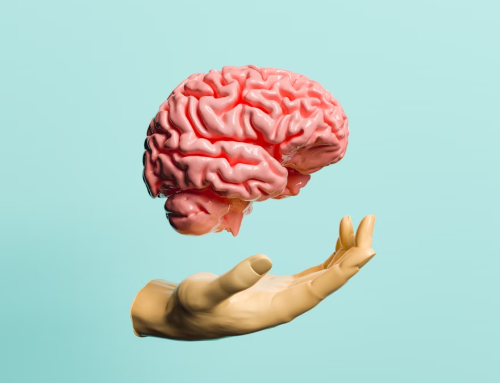
Introduction
Every day, consumers are bombarded with over 10,000 brand messages (Forbes, 2023). Yet, only a handful make a lasting impact. What differentiates a memorable brand from one that fades into the background? The answer lies in neuromarketing—the intersection of neuroscience and marketing that deciphers how our brains respond to advertising, packaging, and brand experiences.
Major brands like Coca-Cola, Starbucks, Frito-Lay, and Hyundai leverage neuromarketing to optimize consumer engagement, using biometric data and behavioral psychology. This article explores how sensory stimuli influence purchasing behavior, the tools brands use to analyze subconscious reactions, and real-world examples of neuromarketing success.
Neuromarketing: A Growing Industry
The neuromarketing industry is expanding rapidly, with the global market valued at USD 1.71 billion in 2025, projected to reach USD 2.62 billion by 2030 with a CAGR of 8.89% (Mordor Intelligence, 2023). The increasing adoption of biometric research tools such as EEG, eye-tracking, and facial expression analysis is fueling this growth.
The Neuroscience Behind Consumer Decisions
Traditional marketing relies on focus groups and surveys, but 95% of consumer decisions are made subconsciously (Harvard Business Review, 2023). Neuromarketing analyzes brain activity and physiological responses to understand what truly drives purchasing behavior.
Key neuromarketing techniques include:
✔ Eye-Tracking: Measures where consumers focus on a webpage, ad, or product. ✔ Facial Expression Analysis: Captures real-time emotional reactions to marketing stimuli. ✔ EEG (Electroencephalography): Tracks brain activity to assess emotional engagement.
✔ GSR (Galvanic Skin Response): Monitors physiological arousal through sweat gland activity.
Example: PayPal used EEG and biometric analysis to test ad messaging. Results showed that ads emphasizing speed and convenience triggered positive emotional responses, leading to a 20% increase in engagement and a shift in marketing strategy (Forbes, 2023).
How the Five Senses Influence Consumer Behavior
- Sight: The Power of Visual Cues
Colors, branding, and packaging shape consumer perception.
Example: Campbell’s Soup redesigned its packaging after neuromarketing studies showed that warmer colors and less text created stronger emotional engagement, leading to increased sales (Innerscope Research, Wikipedia).
- Sound: How Audio Branding Creates Loyalty
Sound influences how we perceive brands.
Example: McDonald’s iconic “Ba-da-ba-ba-ba, I’m Lovin’ It” jingle was tested through neuromarketing to ensure it evoked positive emotions and brand recall (Neuroscience Marketing, 2023).
- Touch: Haptic Feedback and Consumer Trust
Consumers trust products more when they physically interact with them.
Example: Apple encourages customers to touch and test devices in stores, enhancing trust and increasing purchase intent (Forbes, 2023).
- Smell: Scent Marketing and Brand Associations
Smells trigger memories and emotions, directly impacting purchases.
Example: Starbucks grinds fresh coffee beans in-store to create an inviting atmosphere. They even discontinued certain food items because their scent interfered with the signature coffee aroma (Neuroscience Marketing, 2023).
- Taste: Leveraging Free Sampling for Sales
Taste plays a major role in food marketing.
Example: Costco uses free samples to increase sales by up to 30% in some product categories (Food Business News, 2023).
Neuromarketing Tools: How Brands Analyze Consumer Behavior
- iMotions: Real-Time Emotional Tracking
iMotions integrates eye-tracking, facial analysis, EEG, and GSR to measure consumer reactions to ads and products.
Example: Hyundai used iMotions to analyze emotional responses to car designs, refining their vehicle aesthetics based on biometric insights (BuiltIn, 2023).
- ANOVA: Statistical Analysis for Marketing Insights
ANOVA (Analysis of Variance) determines which marketing elements generate higher engagement.
Example: Coca-Cola used ANOVA testing to refine ad placements and optimize social media campaigns (Forbes, 2023).
Real-World Applications of Neuromarketing
- Digital Marketing: Eye-Tracking & CTA Optimization
- Use heatmaps to optimize website layouts.
- Apply color psychology (e.g., red for urgency, blue for trust).
Example: Amazon places its “Buy Now” button in high-contrast colors like orange to stimulate impulse purchases (Neuroscience Marketing, 2023).
- Advertising: Emotionally Engaging Campaigns
- Test ad creatives with facial recognition before launching.
- Use music and storytelling to trigger positive emotional responses.
Example: Coca-Cola’s “Share a Coke” campaign used personalized bottle labels, increasing sales by 2% in the U.S. (Forbes, 2023).
- In-Store Experiences: Sensory Marketing
- Implement signature scents to create a unique brand identity.
- Use haptic feedback (textured packaging, soft-touch materials).
Example: Nike stores incorporate custom scents and upbeat music, creating an energetic shopping experience that boosts customer engagement (BuiltIn, 2023).
The Future of Neuromarketing
As AI and machine learning advance, neuromarketing is evolving:
AI-Powered Emotional Analysis – Ads will adapt in real-time based on consumer responses. VR & AR Neuromarketing – Brands will simulate in-store experiences and track neural responses. Brain-Computer Interfaces – Direct neural feedback will optimize product development.
Example: Netflix uses AI-driven neuromarketing to optimize thumbnails, selecting images that generate the highest engagement based on eye-tracking and click-through rates (Harvard Business Review, 2023).
Final Thoughts: Why Neuromarketing Matters
Neuromarketing isn’t a trend—it’s a scientific revolution in consumer engagement. Brands that understand subconscious decision-making can create more impactful marketing strategies and increase conversions.
Key Takeaways: ✔ Sensory stimuli play a major role in influencing purchasing behavior. ✔ Biometric tools like iMotions and ANOVA help brands decode subconscious responses. ✔ Brands like Starbucks, Coca-Cola, Nike, and PayPal have successfully leveraged neuromarketing for increased engagement.
Would you consider applying neuromarketing insights in your business strategy? Share your thoughts in the comments! 👇
Citations:
- Forbes, “Neuromarketing: The Future of Marketing Strategy” (2023)
- Mordor Intelligence, “Global Neuromarketing Market Report” (2023)
- Harvard Business Review, “The Science Behind Consumer Decision-Making” (2023)
- BuiltIn, “How Neuromarketing is Changing Advertising” (2023)
- Neuroscience Marketing, “Starbucks and the Power of Scent Marketing” (2023)
- Innerscope Research, Wikipedia (2023)
- Food Business News, “How Free Samples Influence Buying Behavior” (2023


